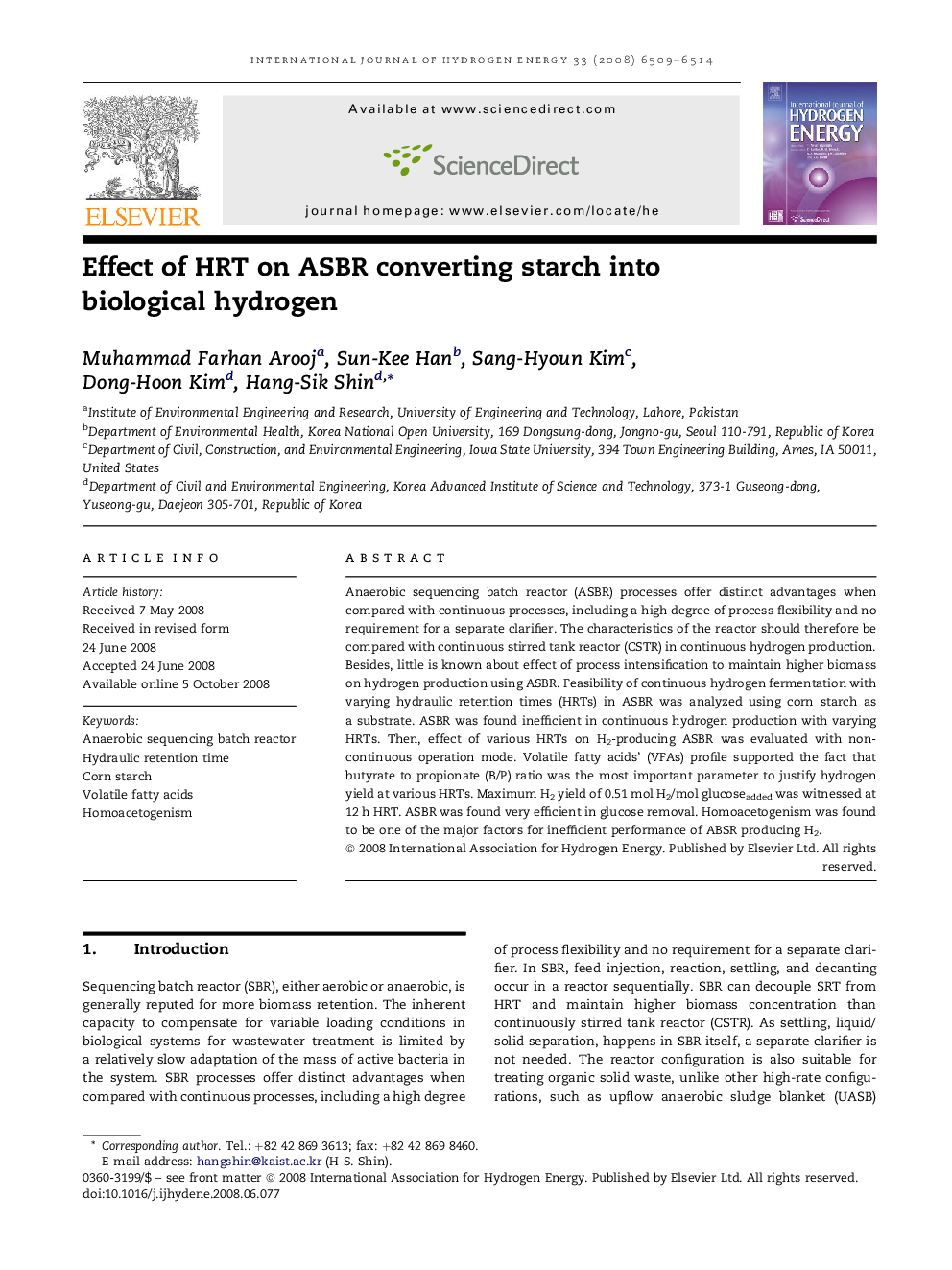| Article ID | Journal | Published Year | Pages | File Type |
|---|---|---|---|---|
| 1283517 | International Journal of Hydrogen Energy | 2008 | 6 Pages |
Anaerobic sequencing batch reactor (ASBR) processes offer distinct advantages when compared with continuous processes, including a high degree of process flexibility and no requirement for a separate clarifier. The characteristics of the reactor should therefore be compared with continuous stirred tank reactor (CSTR) in continuous hydrogen production. Besides, little is known about effect of process intensification to maintain higher biomass on hydrogen production using ASBR. Feasibility of continuous hydrogen fermentation with varying hydraulic retention times (HRTs) in ASBR was analyzed using corn starch as a substrate. ASBR was found inefficient in continuous hydrogen production with varying HRTs. Then, effect of various HRTs on H2-producing ASBR was evaluated with non-continuous operation mode. Volatile fatty acids' (VFAs) profile supported the fact that butyrate to propionate (B/P) ratio was the most important parameter to justify hydrogen yield at various HRTs. Maximum H2 yield of 0.51 mol H2/mol glucoseadded was witnessed at 12 h HRT. ASBR was found very efficient in glucose removal. Homoacetogenism was found to be one of the major factors for inefficient performance of ABSR producing H2.
